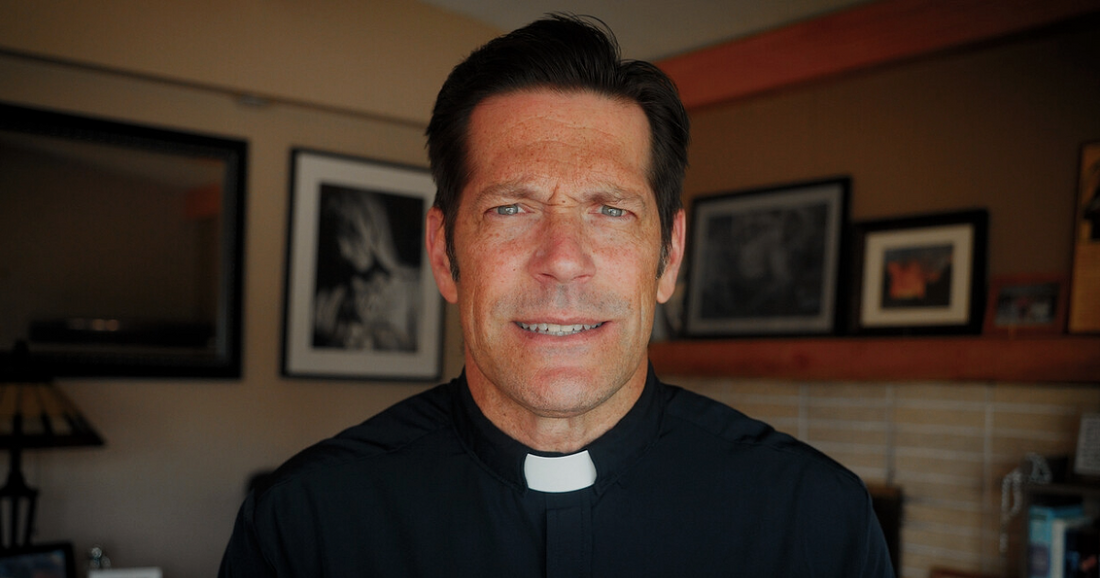
Does the Catholic Church Allow Tattoos? Fr. Mike Explains
Fr. Mike SchmitzAre Tattoos a Sin?
What Does the Catholic Church Say About Tattoos?
A lot of Christians and Catholics wonder if it is okay to get a tattoo. Is there anything sinful or evil about joining the tattoo trend? Does the Catholic Church have an official position on whether or not you can get one? In this article, Fr. Mike shares exactly what Christians should know when considering whether to get a tattoo.
What Does the Bible Say About Tattoos?
Yes, tattoos are mentioned in the Bible, and the verdict does not seem positive at first glance. Leviticus 19:28 says: “You shall not make any cuttings in your flesh on account of the dead or tattoo any marks upon you.” However, Fr. Mike reminds us that context is important when we read Scripture; otherwise, we might misunderstand the Lord’s directive about tattoos.
Fr. Mike explains that the Lord was forbidding the Jewish people to mark their bodies with any sort of tribal identity, ritual designation, or in dedication to the dead. God had chosen the people of Israel as his own. They were to be faithful to the true and living God, consecrating themselves to him alone.
Does The Bible Prohibit Any And All Tattoos?
The answer is no –– there is no specific or explicit prohibition against any or all kinds of tattoos in the Bible. But even though the practice of wearing tattoos is not intrinsically evil, there are some important things for Christians to keep in mind, especially when choosing a design.
Like the people of the Old Testament, Christians are also God’s chosen people. Therefore, what we display on ourselves, and in particular what we place permanently on our bodies, must reflect our true dignity in the Lord.
Are There Any Tattoos the Catholic Church Does Not Permit?
Catholic View on Tattoos
Not all tattoos are equal, and Fr. Mike explains that there are certain kinds that Christians should avoid. Here are 3 things to consider and what to avoid:
- The kind of tattoo: Christians should not wear tattoos that convey something evil –– specifically anything satanic, crude, impure, or blasphemous.
- Where that tattoo is placed: Even a harmless design can be placed inappropriately and call attention to the body in a wrong or overly sexualized way.
- The number of tattoos a person decides to get: Some people simply like having tattoos all over, but sporting too many could raise questions.
Consider The Why Behind Your Tattoo
After mentioning these considerations, Fr. Mike continues with some great questions that Catholics should ask themselves before getting a tattoo:
“What am I seeking when I get a tattoo?”
“What am I saying when I mark up my body?”
“What am I revealing about my deepest identity?”
It is important to evaluate the purpose of the tattoo you are getting. For one person, tattoos could be worn as a meaningful reminder of some important truth, while for others, it may send a wrong message of shame, self-loathing, insecurity, or attempting to hide something they don’t like about their body. Ultimately, what we place on our bodies should always reflect our authentic identity as sons and daughters of God.
A Tattoo Is A Permanent Statement
Fr. Mike Schmitz On Tattoos
Fr. Mike suggests that sometimes the tattoo question comes down to a practical consideration: What design are you willing to wear on your body permanently?
As fickle people in a fluctuating culture, our tastes change. Think honestly about the one tattoo you would have wanted ten years ago: it could be drastically different from the one you’d get today. And because these designs are placed on the body permanently, Fr. Mike recommends taking time to consider your tattoo decision.
Finally, when it comes back to the question of “Can (or should) I get a tattoo?” Fr. Mike’s parting thought is insightful: The way we live, and not a trendy inked design on our bodies, is what best identifies who we are. “Tattoos are a one-time decision. I want to live my life like a Christian every single day!”
Watch the Full Video Below!
You Might Also Like:
- Catholic Holy Days of Obligation Explained
- The Catechism of the Catholic Church
- Connected: Catholic Social Teaching Explained
- The Bible in a Year